Know your Transplants:
Movers, Divers, Sprinters and Sprawlers
From the Bountiful Gardens Archive
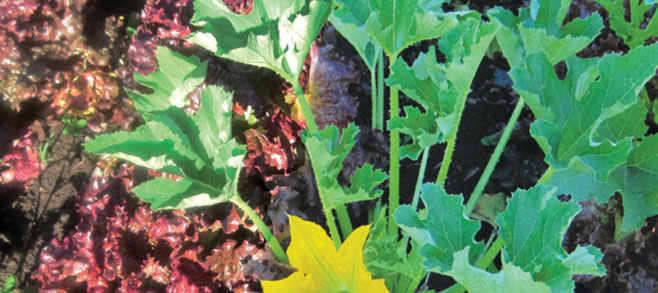
Image: "Sprinters" (lettuce) and "Sprawlers" (squash) growing together
Garden vegetables can be grouped by
their root structure and their tolerance
for transplanting. This system tells you
which crops like to be transplanted; which don't want
to be disturbed; and which can wait the longest to
get to their final position in the garden. Root type is
important when choosing companion plants as well.
If plants are going to be growing in close quarters,
they will get in one another's way much less if they
have different types of roots. For example, carrots
or parsnips will burrow down into levels below a lettuce
plant's matlike root system. There are four major
root-type groups: Movers, Divers, Sprinters,
and Sprawlers. Below you'll find simple strategies
for sowing and transplanting each group.
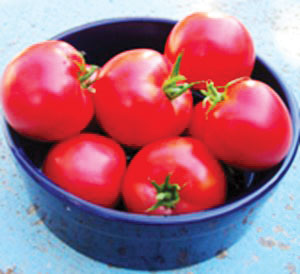 Movers: Movers:
These are mostly the traditional
European brassicas: cabbage,
Brussels sprouts, kale, broccoli,
cauliflowers, and so on. They have
been selected over the centuries
for transplanting into the garden. Tomatoes, and
to some extent peppers, are summer crops that can
also be handled in this way. They grow fairly slowly,
(which makes cabbages more frost-hardy and gives
tomatoes the framework to support fruit). Traditionally,
onion roots are snipped a bit at transplant to
trim off broken ends and stimulate new growth.
All movers have a fibrous, dense root system that is
actually stimulated by transplanting. In studies at
Cornell University, cabbages had much larger root
systems at maturity if they had been transplanted; and those that had been transplanted twice had the
largest of all! These slower-growing, transplant-loving
crops can stay in their final seedling flat or pot for
about a month, then can be transplanted to a nursery
bed (or in the case of tomatoes, ever-larger pots) until
space opens for their permanent homes. While
transplanting doesn't bother them, crowding
does. So don't hesitate to move them as
often as need be to maintain adequate spacing. Just make sure that they get plenty of compost
and dependable moisture while they’re growing. A
mulch can be helpful as well.
Varieties include:
Amaranth, Brussels Sprouts, Broccoli, Cabbage,
Cauliflower, Collards, Eggplant, Kale, Kohlrabi,
Leeks, Onions, Okra, Peppers, and Tomatoes.
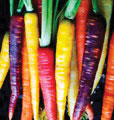 Divers: Divers:
What sets divers apart is their
roots: most are tap-rooted and
send down one main root fast and
deep. Root crops like carrots and
parsnips are divers, but some leaf
or stem crops like Fennel and Chard, and some summer
crops like beans and corn, are part of this group,
too. Even when they have more than just one main
root, divers tend to have a few, large, succulent roots
rather than a mat of small flexible ones. These succulent
roots are brittle, like a good carrot or a bean
sprout. They break when a cabbage root would bend.
Divers do not like transplanting, and should
be either direct-sown, or transplanted when
quite young, before their roots get too big.
On the other hand, they are not so worried by
crowding. In the garden, that means you can put
them in their permanent spot while earlier crops are
still in place. In spring, you may be able to sow them
into openings in your winter cover crop. An example
would be sowing beets under the shade of caged
tomato vines, or chard under spring peas. Most legumes,
like peas, favas, and lentils are not tap-rooted,
but their roots are shallow, brittle and easily
damaged, so treat them as divers and direct-sow or
transplant from seedling flats quickly and carefully.
Varieties include: Asparagus, Beans, Beets,
Burdock, Carrots, Celery, Chard, Corn, Fennel,
Lentils, Parsnips, Peas, Radishes, and Salsify.
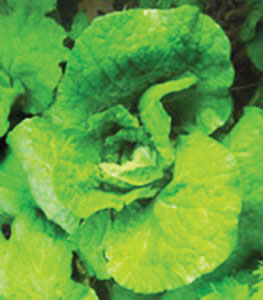 Sprinters: Sprinters:
These are the juicy, leafy, fast-growing
plants that mature very quickly:
Asian greens, Lettuce, Spinach,
and Mustard. They have been selected
over the centuries for crisp
juicy leaves, mild flavor, and fast growth. They can
be sown in place or transplanted once—but then they
need to get down to business and finish up. They bolt
quickly once they are mature, or under stress.
Traditionally, the farmer sows and harvests multiple
quick crops a year, which are cut and used right
away (or pickled as in Kimchi). For example, heads
of lettuce or bok-choy that are cut and refrigerated
properly will often stay in good condition longer
than similar heads that are left in the ground. If you
buy or grow these in pots—especially if they
are little six-packs—get them in the ground
as fast as you can. Potbound plants will bolt.
Varieties include: Amara, Aztec Spinach, Bok
Choy, Napa/Chinese Cabbage, Chicory, Endive, Lettuce,
Mizuna, Miner's Lettuce, Minutina, Mustard,
Purslane, Orach, Radicchio, Spinach, Tatsoi, and
Turnips.
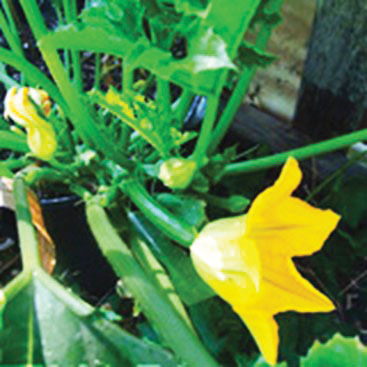 Sprawlers: Sprawlers:
Sprawlers are large plants with
a need for a far-ranging root system.
All the squash tribe—including
melons and cucumbers as well
as winter and summer squash—are
sprawlers. Corn, sunflowers, and okra share the same
requirements. They need conditions that support a
large, fast-growing root system, and their roots tend
to be somewhat fragile. They can be transplanted
(carefully) once when small but have traditionally
been direct-sown. All of them love
organic matter and can use vast amounts of
fertility if it is available. So, they are best given a
final, sunny position early, even if it means cutting
an opening in your winter cover crop, or planting
the young starts among your spring peas and lettuce.
I like to plant squash by hoeing openings in
a bed of winter vetch, which enriches the soil. The
vetch can be cut, stacked to one side to dry, and later
used as a nutrient-rich, weed-smothering mulch for
the squash.
Varieties include: Corn, Cucumbers,
Melons, Pumpkins, Okra, Sunflower, Squash, and
Watermelon
♥
top | Newsletter Home |Table of Contents| Archive

|



 Movers:
Movers:  Divers:
Divers:
 Sprinters:
Sprinters: Sprawlers:
Sprawlers:
